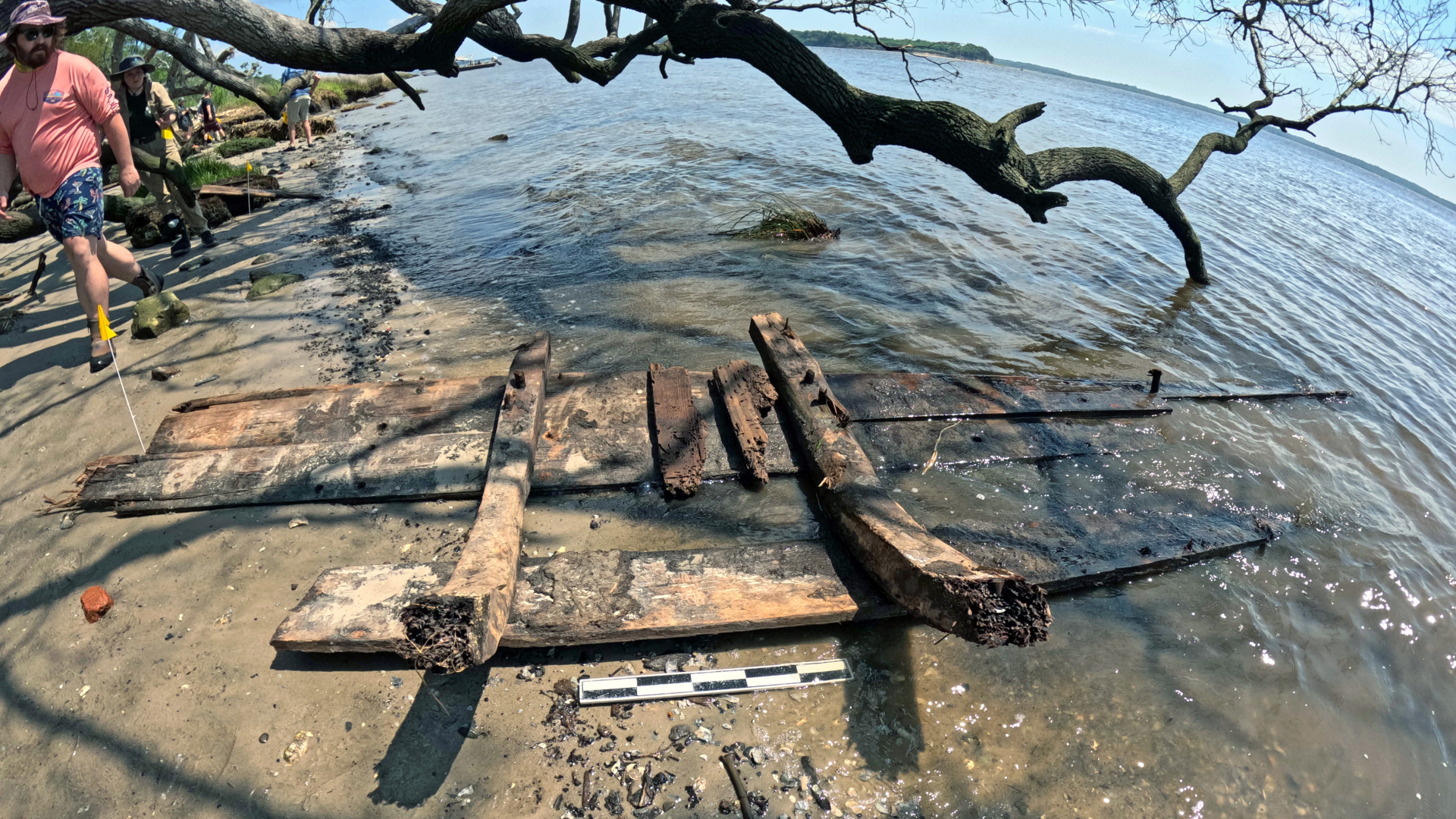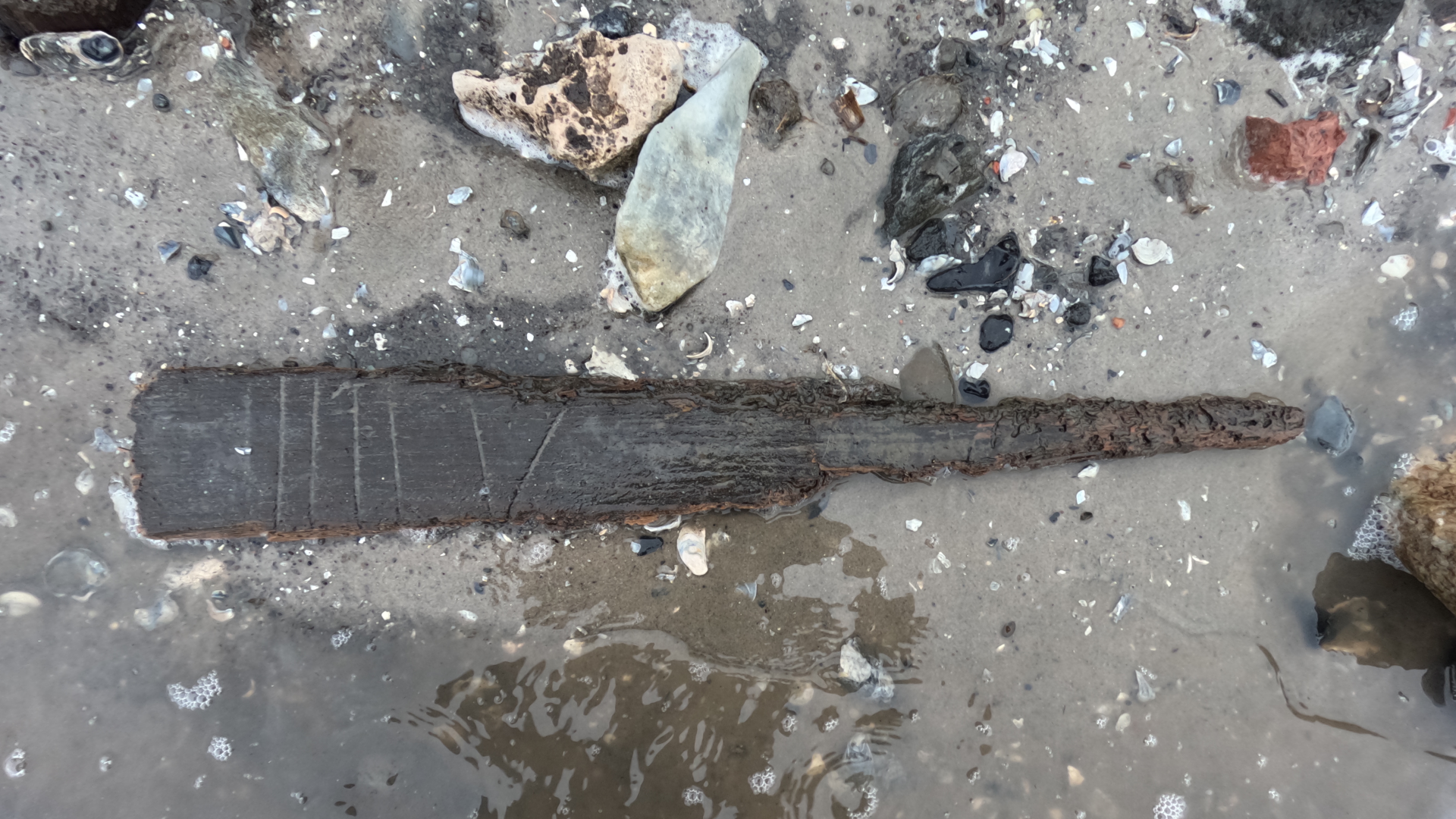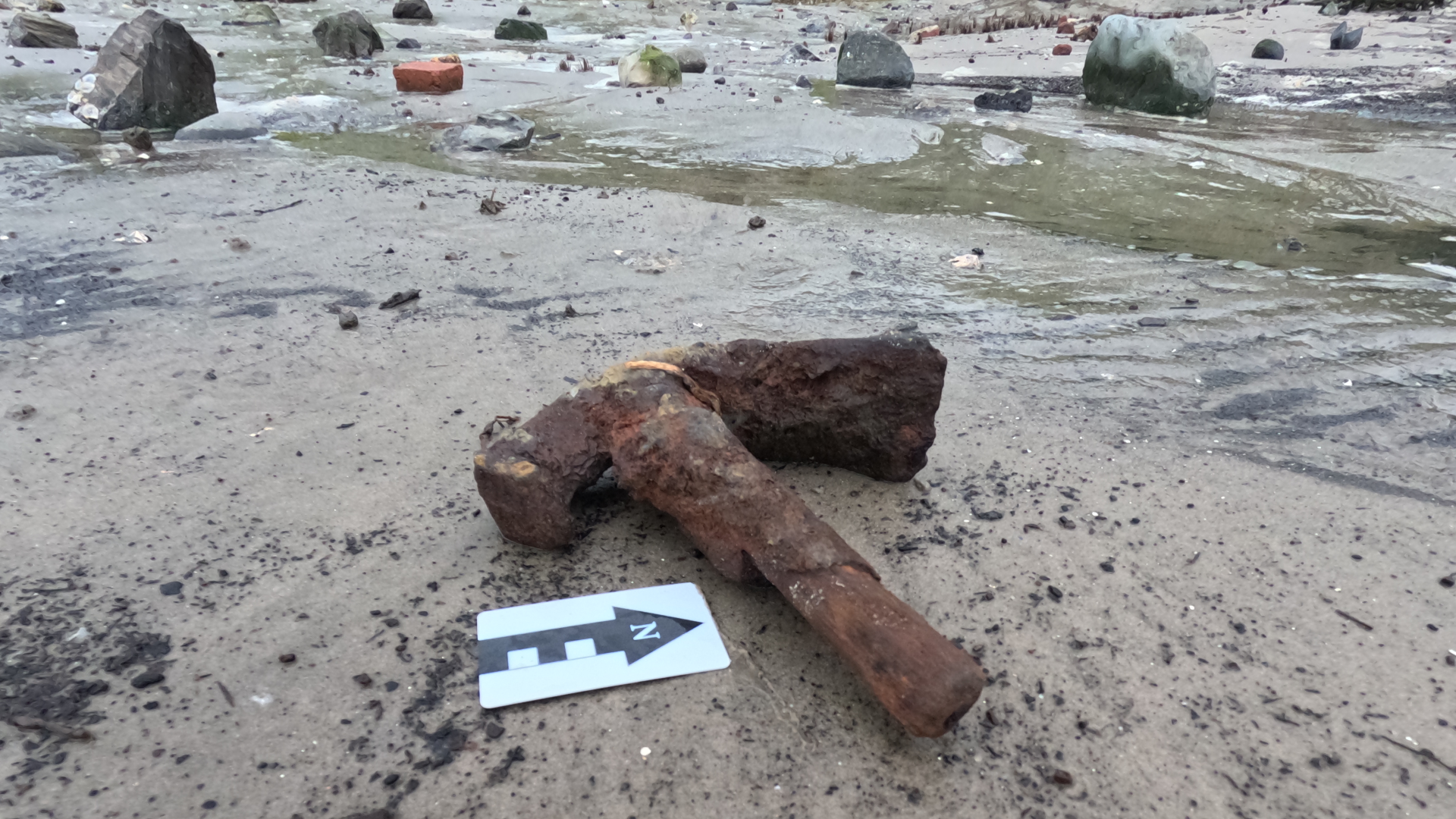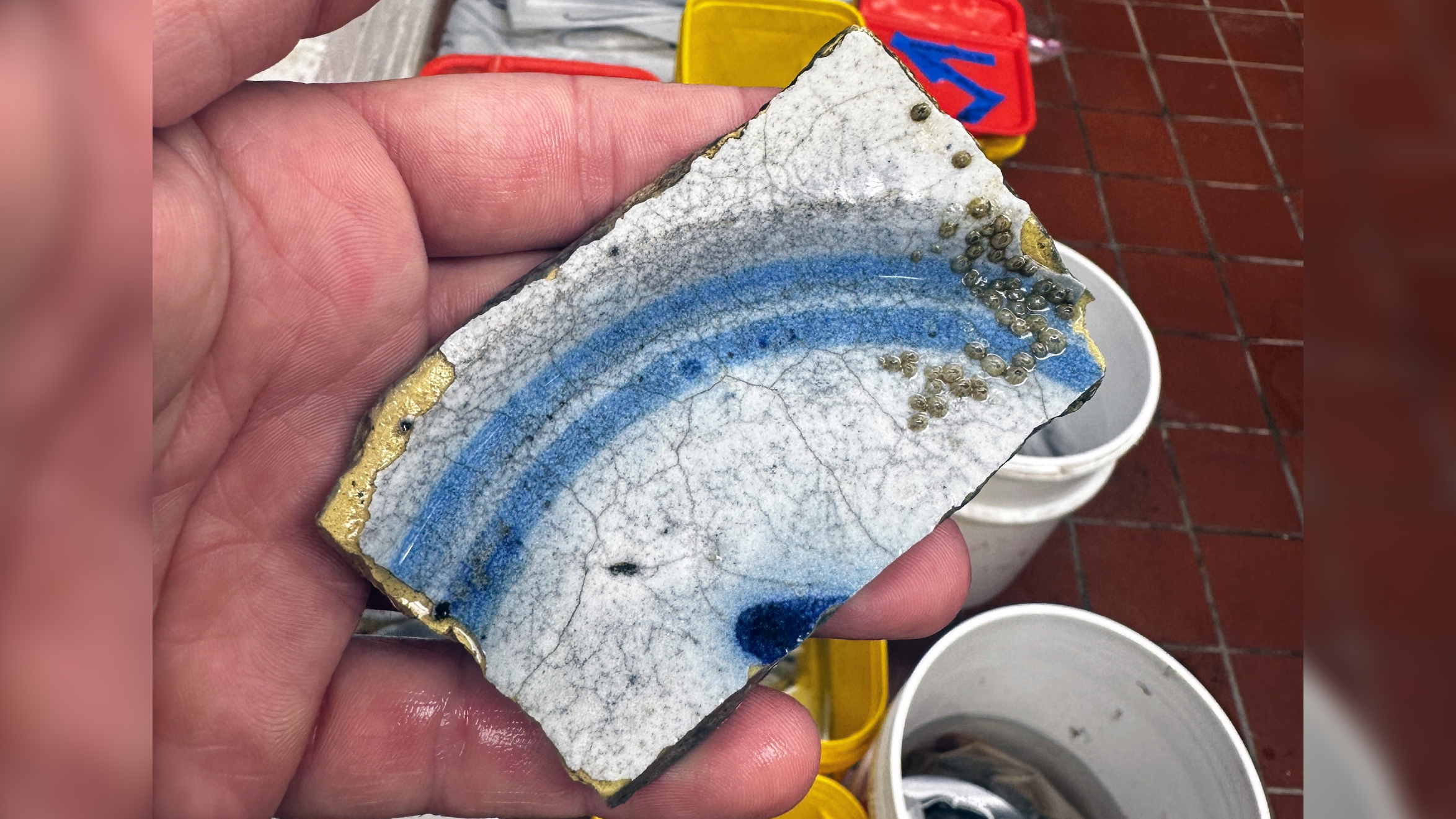Archaeologists locate 'La Fortuna,' a Spanish ship that exploded in 1748 along North Carolina's coast
Four shipwrecks newly discovered on the North Carolina coast date to colonial times, including one that blew up during an attack.

Archaeologists have discovered four 18th-century shipwrecks off the coast of North Carolina, including what may be the wreck of La Fortuna, a Spanish privateer from Cuba that exploded during an attack in 1748.
The wrecks were found near Brunswick Town, a major Colonial port on the southern coast of North Carolina. The town was the first successful European settlement of the Cape Fear region (named due to 16th-century sailors' fears of getting shipwrecked), and the port was used to export pine products like tar and turpentine used by the Royal Navy. But archaeologists surveying the area had not expected to find such a large number of wrecks and colonial artifacts.
"Visibility [underwater] is consistently pretty low in the Cape Fear River," Cory van Hees, a graduate student at East Carolina University (ECU), said in a statement. Van Hees got disoriented while diving and came across beams of wood sticking out of the mud. "I didn't understand what I was looking at in that moment," van Hees said, "but I knew I should relay the wooden structure to faculty."
The project co-leaders, ECU maritime archaeologists Jason Raupp and Jeremy Borrelli, think one of the wrecks, which comprises 47 timbers, is La Fortuna. Historical records note that two Spanish ships anchored off Brunswick Town on Sept. 4, 1748. The Spanish began to raid the then-English town, but they were surprised by a counterattack from the colonists a couple of days later. During the attack, La Fortuna exploded and sank.
The project team found two major clues that the wreck is indeed La Fortuna: the timbers and the artifacts nearby, including Spanish pottery.
Some of the wood used in the ship's construction was from a cypress species native to Central America. This suggests that shipbuilders used raw materials from a Spanish Caribbean colony to construct the ship, according to the statement, and La Fortuna is the only Spanish ship known to have sunk in this area.
Related: Coins worth over $1 million recovered from 1715 Spanish treasure shipwrecks in Florida
Get the world’s most fascinating discoveries delivered straight to your inbox.

A barrel stave with the Roman numerals IIIIV inscribed on it, found near one of the Colonial wharves at Brunswick Town.

A cooper’s cuttingtool, known as an adze, was found on the beach at Brunswick Town.

A Spanish majolica ceramic sherd was found among the assemblage of shipwreck timbers recovered from the beach at Brunswick Town.

The Colonial timber-crib wharf site is exposed from the eroding coastal marsh at the Brunswick Town historic site.
While recording the shipwrecks this summer, the team "found hundreds of artifacts," Borrelli told Live Science in an email, including "ceramic sherds, glass container bottles, clay tobacco pipes, a cooper's adze [cutting tool], barrel heads and staves, sailcloth, leather shoes, possible clothing fragments, and butchered animal bone." In addition, two fragments of 18th-century Spanish-American ceramics are "another clue supporting the preliminary identification of La Fortuna," Borrelli said.
The other three wrecks are still something of a mystery. All of them have construction details and artifacts that suggest they were used in the 1700s, Borrelli said, which means the wrecks are likely associated with the 50-year lifespan of the Colonial port at Brunswick Town. But coastal erosion has dramatically impacted the archaeological site, scattering the shipwrecks' remains over a wide area, he said.
Raupp and Borrelli plan to continue their investigation into the wrecks.
"As we dig deeper and uncover more evidence, it may lead us in another direction," Borrelli said. "It is highly improbable that any of the other shipwrecks found at Brunswick Town are Spanish vessels, but we can't rule anything out at the moment."

Kristina Killgrove is a staff writer at Live Science with a focus on archaeology and paleoanthropology news. Her articles have also appeared in venues such as Forbes, Smithsonian, and Mental Floss. Kristina holds a Ph.D. in biological anthropology and an M.A. in classical archaeology from the University of North Carolina, as well as a B.A. in Latin from the University of Virginia, and she was formerly a university professor and researcher. She has received awards from the Society for American Archaeology and the American Anthropological Association for her science writing.
You must confirm your public display name before commenting
Please logout and then login again, you will then be prompted to enter your display name.


